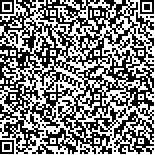| 引用本文: | 茹仁萍,纪倩,王琦,李松龙,田静,包剑锋.萝卜硫素对阿霉素诱导的肝细胞损伤保护作用及其与氧化应激关系的研究[J].中国现代应用药学,2019,36(7):799-803. |
| RU Renping,JI Qian,WANG Qi,LI Songlong,TIAN Jing,BAO Jianfeng.Protective Effect of Sulforaphane on Adriamycin-induced Hepatocellular Injury and Its Relationship with Oxidative Stress[J].Chin J Mod Appl Pharm(中国现代应用药学),2019,36(7):799-803. |
|
| |
|
|
| 本文已被:浏览 2505次 下载 1739次 |

码上扫一扫! |
|
|
| 萝卜硫素对阿霉素诱导的肝细胞损伤保护作用及其与氧化应激关系的研究 |
|
茹仁萍, 纪倩, 王琦, 李松龙, 田静, 包剑锋
|
|
杭州市西溪医院, 杭州 310023
|
|
| 摘要: |
| 目的 探讨萝卜硫素(sulforaphane,SFN)对阿霉素(adriamycin,ADM)诱导的肝细胞损伤保护作用及其与氧化应激的关系。方法 体外培养人正常肝细胞L02和人肝癌细胞株HepG2,加入不同浓度的SFN (6.25,12.5,25,50,100 μg·mL-1),培养48 h;另取HepG2细胞中加入3.75,7.5,15,31.25,62.5,125,250,500 μg·mL-1 SFN,培养24,48 h,MTT法检测培养后细胞抑制率,计算50%抑制浓度(IC50值)。体外培养L02细胞,试验组加入不同浓度的SFN (3.75,7.5,15 μg·mL-1),试验组与模型组分别于0.5,1,2,3 h后加入1.25 mg·mL-1的ADM,通过酶联免疫的方法分别对细胞培养上清液中肿瘤坏死因子-α(TNF-α)、超氧化物歧化酶(SOD)、丙二醛(MDA)、乳酸脱氢酶(LDH)、葡萄糖转运蛋白4(GLUT4)、核因子NF-E2相关因子(Nrf2)进行测定评估。结果 SFN能显著抑制HepG2的体外增殖,而且呈一定的药物浓度-效应和时间-效应关系。SFN对L02的抑制作用相对较弱,其IC50为47.7 μg·mL-1,明显高于其对HepG2的IC50值。另外,与模型组比较,SFN能够明显降低细胞培养上清液MDA、LDH、GLUT4、TNF-α的水平,升高SOD、Nrf2水平。结论 SFN可显著抑制肝癌细胞的体外增殖能力,对其具有一定的选择性抑制作用,而且对于ADM诱导的肝细胞损伤具有一定的保护作用。可能是通过Keap1-Nrf2/ARE通路,诱导二相抗氧化酶清除体内的致癌物质或其他毒物,从而减轻肝脏组织的氧化应激和炎症反应。 |
| 关键词: 肝癌 萝卜硫素 阿霉素 肝细胞损伤 |
| DOI:10.13748/j.cnki.issn1007-7693.2019.07.006 |
| 分类号:R285.5 |
| 基金项目:浙江省中医药科技计划项目(2016ZB106);杭州市卫生科技计划项目(2015A30,2018A48) |
|
| Protective Effect of Sulforaphane on Adriamycin-induced Hepatocellular Injury and Its Relationship with Oxidative Stress |
|
RU Renping, JI Qian, WANG Qi, LI Songlong, TIAN Jing, BAO Jianfeng
|
|
Xixi Hospital of Hangzhou, Hangzhou 310023, China
|
| Abstract: |
| OBJECTIVE To investigate the protective effect of sulforaphane(SFN) on Adriamycin(ADM)-induced hepatocyte injury and its relationship with oxidative stress. METHODS Human normal liver cell(L02) and human hepatoma cell line(HepG2) were incubated in 96-well plates with different concentrations of SFN(6.25, 12.5, 25, 50, 100 μg·mL-1) cultured for 48 h. Another HepG2 cells were added SFN(3.75, 7.5, 15, 31.25, 62.5, 125, 250, 500 μg·mL-1), cultured for 24, 48 h. MTT assay was used to detect the cell inhibition rate. Calculated the 50% inhibitory concentration(IC50 value). In vitro culture of L02, different concentration of SFN(3.75, 7.5, 15 μg·mL-1) were added to the experimental group. 1.25 mg·mL-1 ADM was added to the experimental group and the model group at 0.5, 1, 2, 3 h, respectively. Used the method of enzyme-linked immune in the cell culture supernatant of tumor necrosis factor-α(TNF-α), superoxide dismutase(SOD), malondialdehyde(MDA), lactate dehydrogenase(LDH) glucose transporter 4(GLUT4), nuclear factor NF protein-E2 related factor(Nrf2) determination of assessment. RESULTS SFN could significantly inhibit the in vitro proliferation of HepG2 in a drug concentration-effect and time-effect relationship. The inhibitory effect of SFN on L02 was relatively weak, and its IC50 was 47.7 μg·mL-1, which was significantly higher than that of HepG2. Compared with the model group, SFN could significantly decrease the level of MDA, LDH, GLUT4, TNF-α and the rate of apoptosis, increase the level of SOD, Nrf2 in the supernatant of cell culture. CONCLUSION SFN can significantly inhibit the proliferation of hepatocellular carcinoma cells in vitro, and has a selective inhibitory effect on it. Besides, SFN has a protective effect on ADM-induced hepatocyte injury. Through the Keap1-Nrf2/ARE pathway, biphasic antioxidant enzymes may be induced to eliminate carcinogens or other toxins in the body, therely reducing oxidative stress and inflammatory reaction in the liver tissue. |
| Key words: liver cancer sulforaphane adriamycin hepatocyte injury |
|
|
|
|
